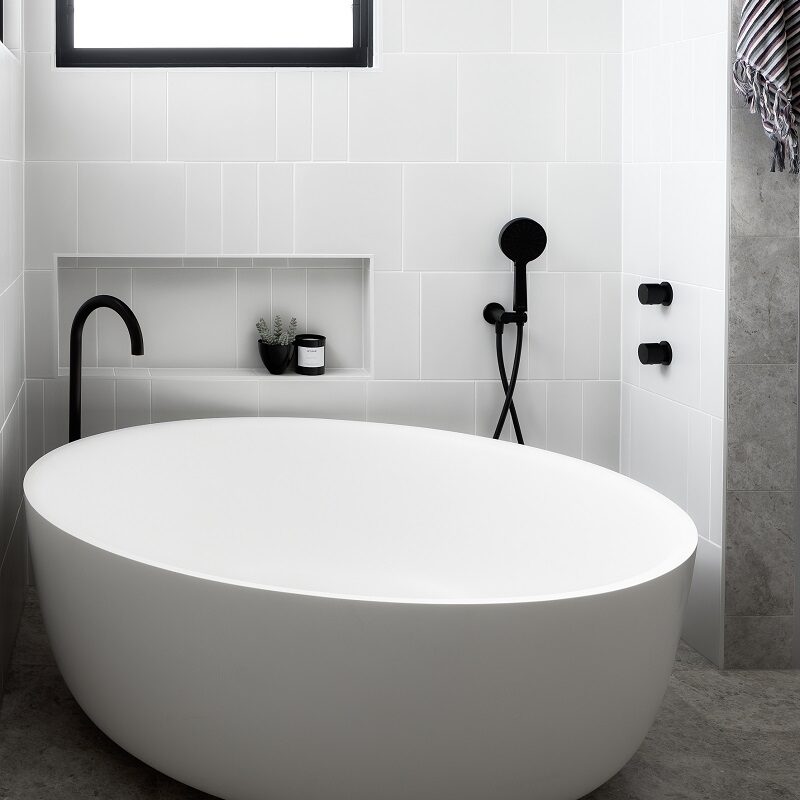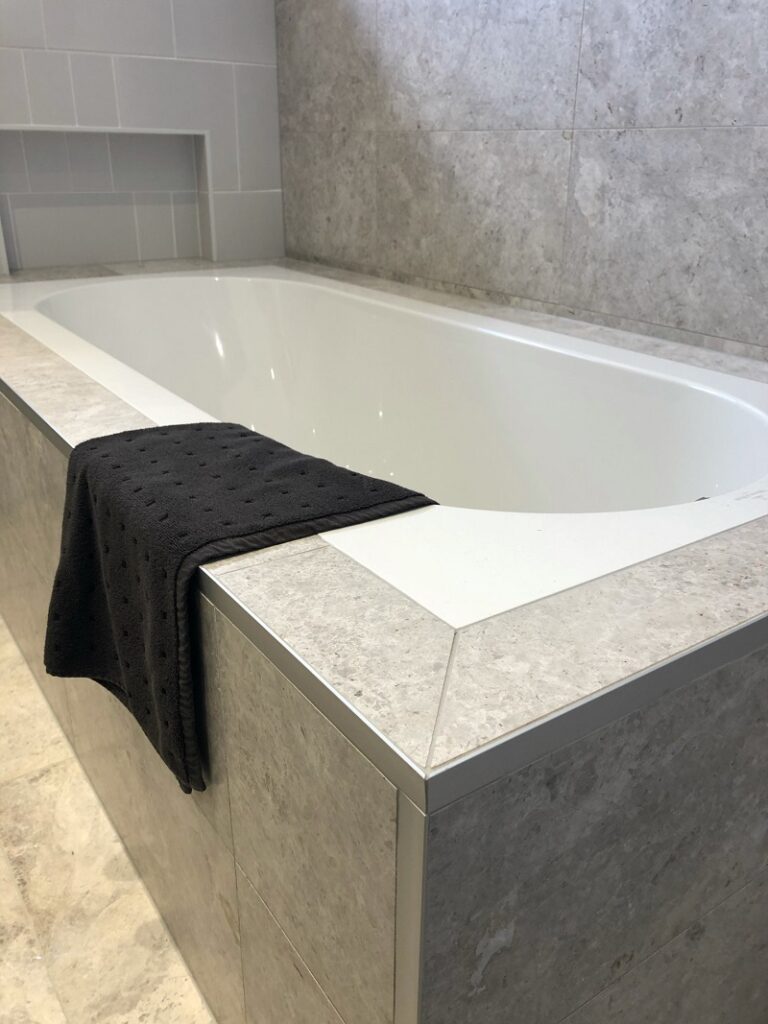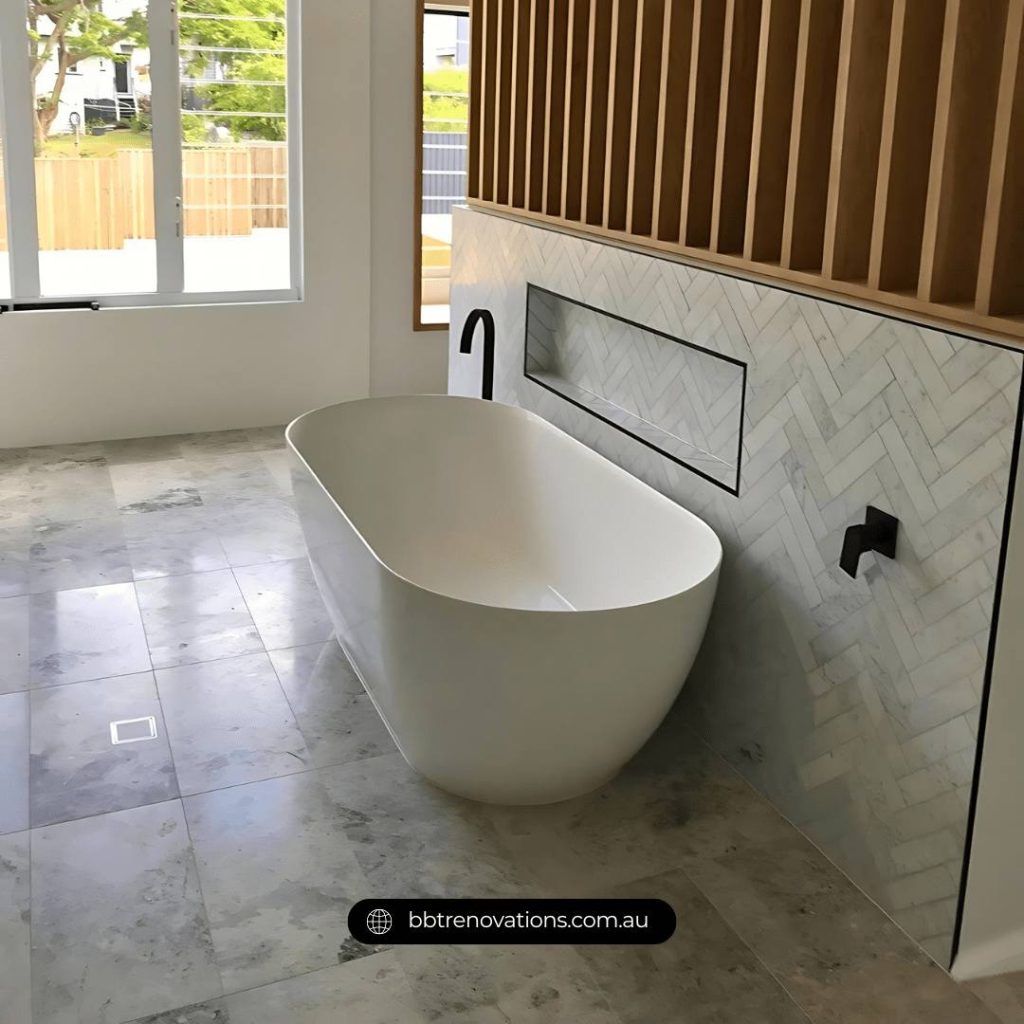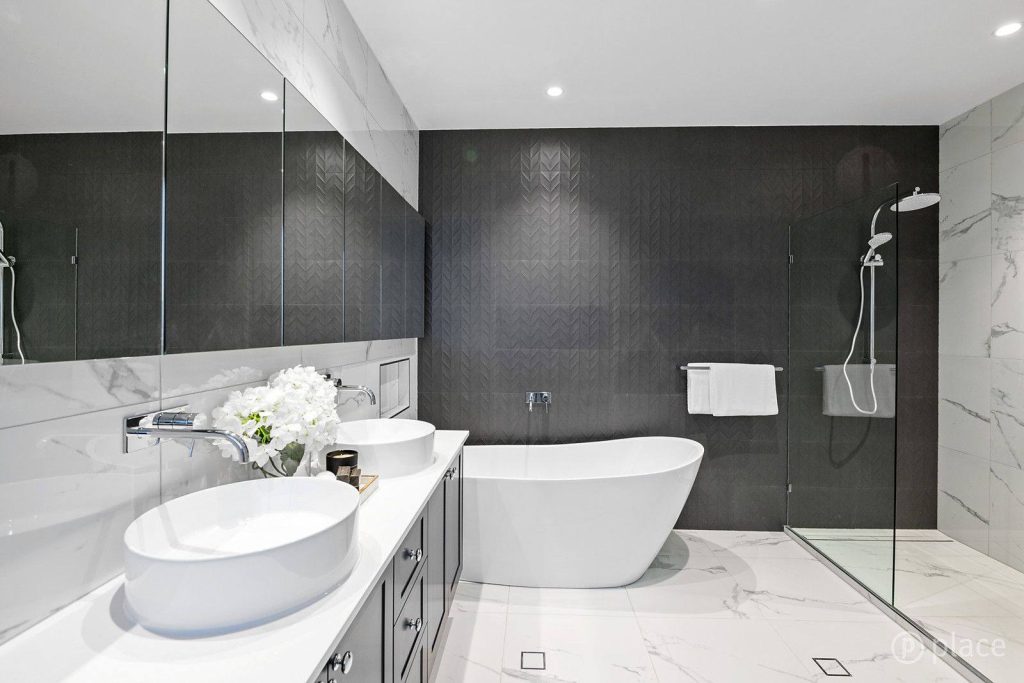Embarking on the journey to select a new bathtub can be a delightful and invigorating experience. With an extensive range of choices available in today’s diverse market, it’s completely natural to feel a tad overwhelmed initially. However, there’s no need for concern. You are on the exciting path to uncovering the perfect enhancement for your bathroom space.
Your ultimate selection of the ideal bathtub is greatly influenced by several pivotal factors, including your bathroom dimensions, budget, and personal stylistic preferences. Are you in pursuit of a deep soak to indulge in complete relaxation, or do you require a quick splash for convenience?
Perhaps you envision a sumptuous spa-like atmosphere, or something that prioritises practicality and functionality?
The bathtub you select can profoundly affect your capacity to unwind and rejuvenate after a long day. The right bathtub has the potential to metamorphose your bathroom into a tranquil oasis, offering a perfect retreat from the daily grind. Let’s delve into some of the most popular bathtub types designed to assist you in identifying your perfect match.

Key Factors to Consider for a Perfect Bathtub Selection
Choosing the ideal bathtub can substantially enhance your overall bathroom experience. It is crucial to take into account various elements, such as materials, dimensions, styles, and the installation process, to ensure a seamless fit for your distinctive space.
In-Depth Examination of Bathtub Materials and Their Unique Benefits
Bathtubs are crafted from a variety of materials, each presenting unique advantages and characteristics. Below are some of the most commonly utilised options:
- Acrylic: This lightweight material not only boasts ease of maintenance but also excels in retaining heat, allowing for long, soothing baths that keep the warmth in.
- Cast iron: Renowned for its classic appearance and remarkable durability, cast iron bathtubs can endure for decades when cared for properly.
- Fiberglass: A cost-effective choice, this lightweight option is manageable, though it may not provide the same longevity as some other materials.
- Stone: Celebrated for its opulent appeal and distinctive characteristics, stone bathtubs often come with a higher price tag.
Each material offers a unique look and tactile experience. Reflect on which qualities resonate most with you as you make your selection.

Exploring Bathtub Sizes to Perfectly Fit Your Space
Bathtubs are available in a myriad of sizes to suit different spaces and user preferences. When determining the suitable size for your new bathtub, consider these essential factors:
- Dimensions of your bathroom – Evaluate the available area for a bathtub installation.
- Height of potential users – Consider the height of individuals who will use the bathtub.
- Desired space for comfort – Do you appreciate having a little extra space to stretch and fully enjoy your bath?
Standard bathtubs typically measure around 150 cm in length and 75 cm in width. However, options are available in both smaller and larger sizes. Ensure you measure your available space accurately before finalising your purchase to prevent fitting complications.
Exploring a Diverse Range of Bathtub Styles and Shapes
There exists an extensive variety of bathtub styles to cater to differing tastes and aesthetics. Here are some popular options:
- Freestanding: This independent design often introduces a touch of elegance and sophistication to any bathroom.
- Alcove: Specifically tailored to fit snugly between three walls, making them ideal for compact spaces.
- Corner: These bathtubs are designed to fit seamlessly into a corner, maximising spatial efficiency.
- Drop-in: These tubs are situated within a frame or deck, providing a sleek and polished appearance.
The shape of your bathtub can significantly influence both the aesthetic and user experience of your bathroom. Oval tubs offer enhanced comfort, while square designs can impart a modern and minimalist atmosphere. Reflect on which style best aligns with your bathroom's overall décor and aesthetic vision.

Evaluating Various Bathtub Installation Techniques
The method you select for installing your bathtub is crucial, as it can impact both the overall expense and the complexity of the installation process. Here are some common installation types:
- Built-in: Designed to fit seamlessly within a designated space in your bathroom for a polished look.
- Freestanding: This type requires no additional support, allowing for flexible placement throughout the space.
- Walk-in: Equipped with a door for easy access, making it ideal for individuals with mobility challenges or disabilities.
Consider the needs of those who will be using the bathtub and the level of installation effort you are prepared to undertake. Some models are more straightforward to install than others, and in certain situations, you may need professional assistance to ensure proper installation.
Essential Factors to Evaluate Beyond Basic Bathtub Selection
When it comes to selecting the right bathtub, there is a plethora of considerations beyond mere size and type. Elements such as comfort, style, and maintenance requirements play vital roles in your overall decision-making process. Let’s delve into some critical factors that warrant your attention.
Enhancing Bathroom Comfort with Thoughtful Features
Comfort is a fundamental aspect that can greatly enrich your bathing experience. Seek out bathtubs that feature ergonomic designs offering essential support for your body. Certain models come equipped with built-in headrests or armrests that can significantly elevate your relaxation experience while soaking.
Moreover, textured surfaces can enhance safety by mitigating the risk of slips during bathing. Many modern bathtubs now offer massage jets, delivering a spa-like experience that helps alleviate muscle tension and promotes improved circulation throughout your body.
Temperature control is another vital comfort feature worth your consideration. High-end bathtubs may incorporate integrated heating systems that maintain your water temperature for extended durations, allowing you to indulge in a longer, more opulent soak without the inconvenience of repeatedly refilling with hot water.
Choosing the Ideal Colour and Design for Your Bathtub
Your bathtub can act as a striking focal point within your bathroom. While classic white remains a timeless choice that harmonises with most décors, do not shy away from exploring alternative colours. Subtle shades of grey, beige, or even bold tones can inject personality and charm into your space.
Consider the overall aesthetic of your bathroom when making your choice. A sleek, contemporary bathtub may clash with a traditional setting. Freestanding tubs often serve as captivating centrepieces, while built-in options can seamlessly integrate with your bathroom's overall design.
The selection of material is also paramount, as it significantly impacts both the visual allure and tactile experience of your bathtub. Glossy acrylic tubs are favoured for their ease of maintenance, whereas stone or concrete tubs offer a distinct, luxurious visual appeal. Additionally, metal tubs, particularly those crafted from copper, can lend a vintage charm to your bathroom.
Effortless Maintenance and Cleaning of Your Bathtub
Opting for a bathtub that is easy to maintain can simplify your daily routines and save valuable time. Different materials exhibit varying levels of resistance to stains and scratches. Acrylic and fibreglass tubs are recognised for their low-maintenance qualities, requiring merely a simple wipe-down to remain clean and in excellent condition.
While cast iron tubs featuring enamel coatings are robust, they can be prone to chipping. If this occurs, it is crucial to address any damage promptly to prevent rust formation. Natural stone tubs may necessitate periodic sealing to guard against stains and enhance their longevity.
Furthermore, consider the shape of your bathtub in relation to ease of cleaning. Tubs with intricate corners or textured surfaces may pose challenges during cleaning. In contrast, smooth and straightforward designs are often easier to maintain. Some contemporary models even come equipped with self-cleaning features, offering significant time-saving benefits.
Connect with Brisbane’s Leading Bathroom Renovation Specialists
If you are prepared to discover your ideal bathtub or have any queries regarding your forthcoming bathroom renovation project, please do not hesitate to get in touch with us today.
Thorough Answers to Commonly Asked Questions Regarding Bathtubs
Selecting the appropriate bathtub necessitates careful consideration of various aspects such as size, material, and design. The following common questions can serve as a valuable guide throughout your decision-making journey.
How Can I Accurately Measure for My New Bathtub?
Accurately measuring your bathroom space is paramount. Contemplate who will be using the bathtub and the frequency of use. A standard bathtub typically measures around 1.5 metres in length, yet variations with both shorter and longer options are readily available. Ensure you check your doorways and hallways to confirm that the bathtub can be manoeuvred through without any complications.

What Are the Key Benefits of Choosing a Porcelain Bathtub Over a Plastic One?
Porcelain bathtubs provide exceptional durability and resistance to scratches, ensuring they maintain heat for longer durations while delivering a solid and luxurious feel. In contrast, plastic tubs are generally lighter and more budget-friendly. They are easier to install and come in a broader array of shapes and designs. Your final choice will ultimately depend on your budget and specific needs.
Which Bathtub Material is Most Appropriate for My Renovation?
Acrylic is a standout option for renovations due to its lightweight nature, warm touch, and effortless cleaning. If you desire a classic aesthetic and do not mind the weight, cast iron could be an excellent alternative. Fibreglass is an economical choice, although it may not offer the same durability. Consider your style preferences, budget, and the desired lifespan of the bathtub when making your selection.
What Bathtub Material Should I Choose If I Have Hard Water at Home?
If hard water poses a challenge in your household, it is advisable to select non-porous materials such as acrylic and porcelain, as they resist stains and are simpler to clean. Avoid materials like copper or natural stone, which may react unfavourably with hard water and become stained over time.
Acrylic vs Fibreglass Tubs: Which Option Should I Opt For?
Acrylic tubs are generally more durable and excel at heat retention compared to their fibreglass counterparts. They also resist scratches and chips more effectively. Conversely, fibreglass tubs are lighter and often more affordable, making them appealing for those prioritising cost. If durability and longevity are paramount, investing in an acrylic tub may prove beneficial.
What Important Information Should I Know About Alcove Bathtubs Before Purchasing?
Alcove bathtubs are specifically designed to fit snugly between three walls, rendering them an excellent choice for compact bathrooms. They usually offer easier installation compared to freestanding models. Be sure to measure your available space accurately. Additionally, think about whether you desire a shower-tub combination and confirm if you require a left-hand or right-hand drain for proper installation.
What sort of bathtub should I choose? A quick guide to finding your perfect soak
The Article: Choosing the Right Bathtub: A Quick Guide to Your Perfect Soak first appeared on https://writebuff.com
The Article Bathtub Buying Guide: Find Your Perfect Soak Today Was Found On https://limitsofstrategy.com

